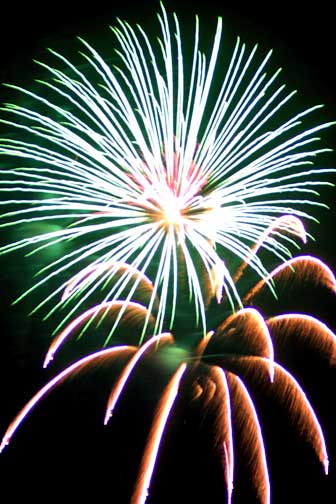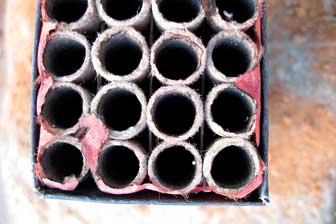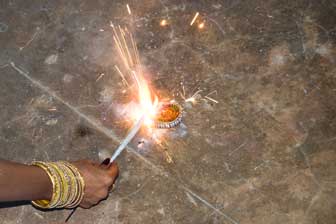Facts about the Science of Fireworks
Posted by Admin / in Science Facts

Learn some interesting fireworks facts.
Ingredients of Fireworks
- The main ingredient in fireworks is black powder. Black powder is very explosive and is also used in gunpowder and was used as an explosive before dynamite (stabilized nitroglycerin) was invented.
- Black powder is a mixture of saltpeter, sulfur and charcoal.
- Saltpeter is a result of bacteria. Bacteria extracts nitrogen from the waste of animals and people and combines the nitrogen with oxygen. The resulting chemical is potassium nitrate. Potassium nitrate devolves in water. As the water from the mixture evaporates, crystals called saltpeter are left behind.
- Sulfur is known for its bad smell. Sulfur is a naturally occurring element on the Periodic Table of Elements.
- Charcoal is wood that is burned until the impurities are removed. The remaining black material is almost purely carbon.
- When black powder is ignited, energy is released as two rapidly expanding hot gases, sulfur dioxide and carbon dioxide are released. This release of rapidly expanding gases, not only help propel the fireworks into the air, but cause the explosions we see in the sky.
Firework Chemistry of Colors
- Chemistry plays a large role in the colors we see when fireworks explode in the air.
- Sodium (salt) compounds added to a firework shell make orange or yellow colors.
- Aluminum and magnesium added to a firework shell make a white explosion.
- Carbon is added to firework shells to make a golden glow.
- A compound containing barium creates a green firework explosion.
- A compound containing strontium or lithium makes a brilliant red firework.
- Silver fireworks can be made by adding aluminum or magnesium.
- Blue fireworks are the most difficult to make. Experts can combine copper and a chloride to make a blue firework.

This orange-yellow firework has sodium added to give it the color

Red fireworks have strontium or lithium to give them their color in the sky
Interesting Facts about Fireworks
- The launching mechanism for a professional firework is like a small cannon. A hollow metal tube is used with black powder at the base to propel the firework shell into the air. Most professional fireworks launch the shells about 100 feet (30 meters) into the air.
- If you love fireworks, visit Walt Disney World near Orlando Florida where there are large fireworks shows every night in EPCOT and the Magic Kingdom. During the peak times (Spring Break, Christmas and summer) there are multiple fireworks shows each every night.
- The World's record size for a single firework shell is 48" (120 cm) diameter, weighing 925 pounds (420 kg). It was made by a company in Japan. The explosion was more than one-half mile (800 meters) in size. You can see the record firework shell in the video below.
- Professional fireworks displays no longer use wicks to light the firework. Special electronic ignition equipment is used to providing better timing and safety.
- Fireworks are extremely dangerous. Each year kids get hurt playing with fireworks. A sparkler burns up to a temperature of 1000 degrees F!


Fireworks are very dangerous
